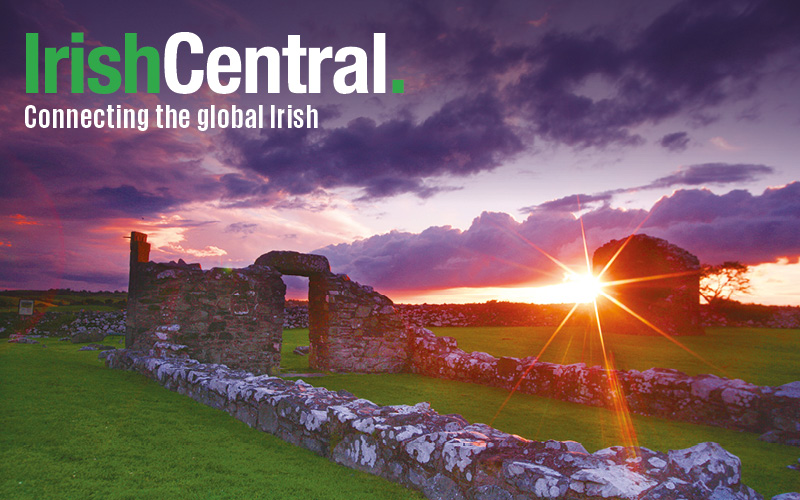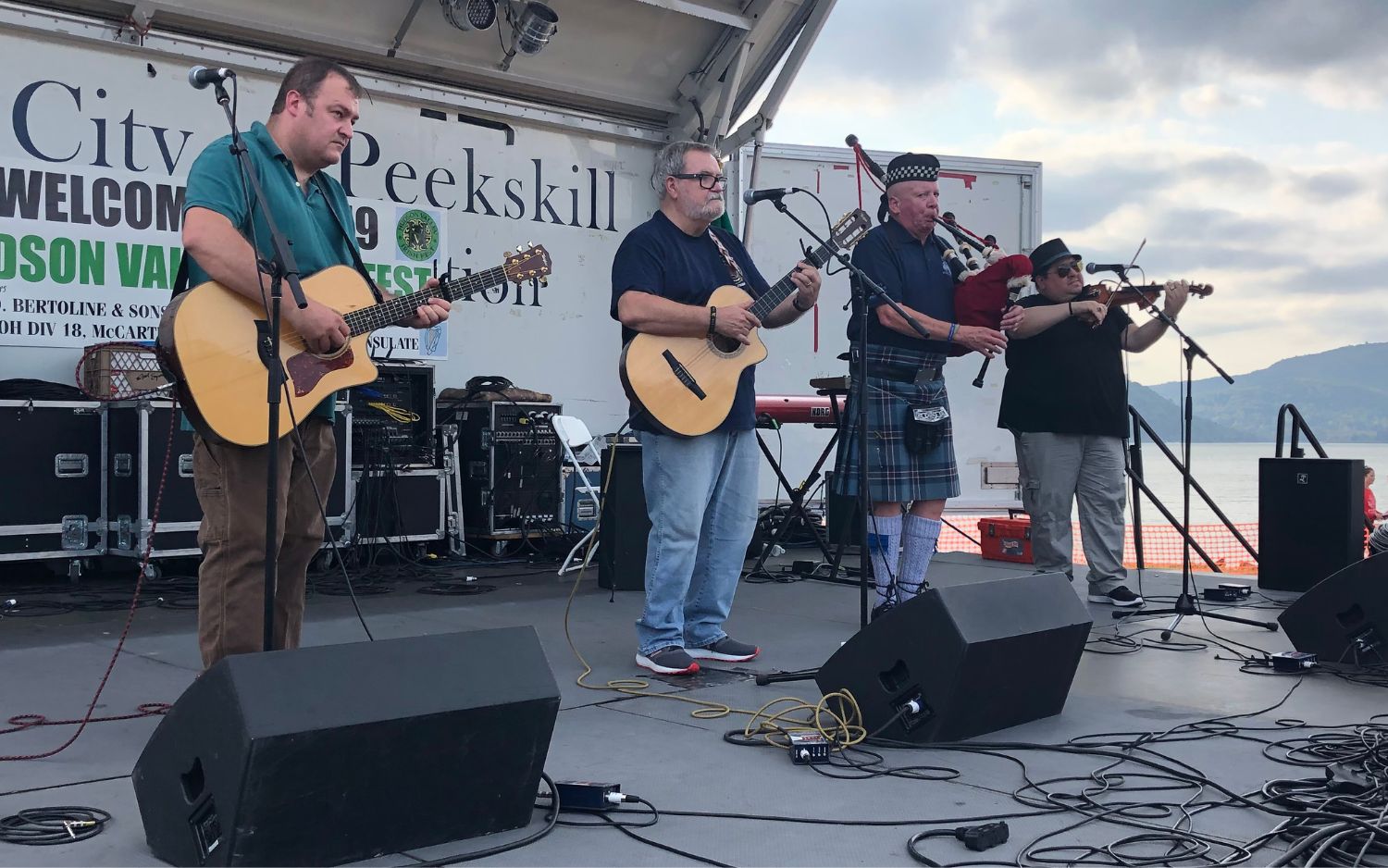Monday is Easter Monday 2016, the centenary of Easter Monday 1916, the day the armed rebellion against British rule began when Patrick Pearse and his comrades took over the General Post Office building on O'Connell Street in Dublin.
The fighting lasted only six days and involved not much more than a thousand rebels -- and they had no hope of winning. But it eventually led to Irish independence, some six years later.
Easter is earlier this year so the dates don't match (Easter Monday 1916 was April 24 and this year it is March 28), but the connection with Easter is far more important than the calendar dates. The rebellion, after all, is famous in Irish history as the Easter Rising.
So next weekend will see many official events here to commemorate the Rising. On Saturday there will be a state ceremony in the Garden of Remembrance at Parnell Square in the center of Dublin, which will be carried live on RTE, and later that day there will be a major reception in the RDS for the relatives of those who were involved in the Rising. Both events will be attended by President Michael D. Higgins, political leaders and dignitaries.
On Sunday huge crowds are expected in the center of Dublin for the ceremonies at the GPO which will begin with the reading of the 1916 Proclamation by an army officer, after which Higgins will lay a wreath, and there will be a minute’s silence, followed by the national anthem, the big military parade and a 21-gun salute. On Sunday evening there will be a state reception at Dublin Castle for 3,000 guests.
One of the most anticipated events is the open air concert taking place on Sunday afternoon at Collins Barracks in Dublin which will include One Hundred Years a Nation by composer Shaun Davey and poet Paul Muldoon. Over 1,000 voices from choirs all over Ireland will join together in the performance which will be broadcast live on TV and radio.
On Sunday there will also be ceremonies at Glasnevin Cemetery and Kilmainham Gaol, where the rebels were executed. And of course this weekend will just be the beginning. The commemorations and celebrations in Dublin and across the country will continue in the weeks and months to come.
In addition to the big state occasions, individual events will be taking place in towns across Ireland as people remember the past, with music, theater, lectures, exhibitions, parades and history symposia.
Many events will involve the Irish abroad and particularly in America, from where some of the money and impetus for the Rising came.
A great deal of planning has gone into constructing the program for the 1916 commemorations, with the aim of reaching into all parts of Irish society. For example, all schools across the country have been visited by members of the army and presented with an Irish flag as a way of involving children in the centenary and starting class discussions about our history.
And already there are a number of impressive exhibitions open, like the one at Collins Barracks and the one in the basement of the GPO, both with fascinating memorabilia from 1916.
The events mentioned above are just a few of the many that are happening this weekend. Full details of the program for the weekend -- and the rest of the year -- can be seen on the official website Ireland.ie and the long list of events is very impressive.
This is all as it should be. It is right that we commemorate the Easter 1916 Rising.
Even if independence came six years later and was more a result of subsequent events, the Rising did kickstart the sequence that led up to it and so is a major part of our national story. But there are uncomfortable facts to do with the Rising that need to be borne in mind as the commemorations and celebrations take place.
There is a natural tendency at a time like this to simplify and sanitize what happened, to turn the 1916 leaders into heroic figures of almost mythical status. The accepted narrative of great courage and supreme sacrifice almost requires it.
But it ignores the reality that the 1916 leaders were ordinary men, just as flawed as anyone else, but different because they shared an idealistic, romantic vision of a future Ireland. In their eyes this vision justified taking actions that in the words of the historian Ruth Dudley Edwards were the product of "dangerous eccentricity and narcissism."
There is no denying the bravery of the men of 1916. But as we know only too well these days, it is possible to be foolish or fanatical and also have great courage.
Dudley Edwards' reference to narcissism may seem like a cheap shot. But the 1916 leaders' sense of entitlement to act on behalf of the entire Irish people, even though they were a tiny secretive cabal, can be seen that way. The presumptuous certainty involved is breathtaking.
The fact is that the leaders of the Rising, the seven signatories of the Proclamation, had no popular support, no electoral mandate and no right to do what they did (the "dead generations" justification offered in the Proclamation is far from convincing).
They did not ask the generation in which they lived. Their actions led to a large number of that generation losing their lives.
The fact that their actions led to independence six years later had more to do with the stupidity of the British in carrying out the executions than any general support for the 1916 leaders at the time of the Rising. Yes, public opinion did swing as time went on, but the fact is that the vast majority of Irish people at the time of the Rising were strongly against -- and even appalled by -- the action.
It's all too easy to forget the contemporary context when one talks now of the men of 1916 fighting against "British rule." The Ireland of the time was part of the United Kingdom, but it was a fully functioning democracy with Irish MPs in the Westminster Parliament, free speech, free elections and a legal and administrative system that Irish people not only supported but played a leading role in, as they did in many parts of the British empire.
Ireland at the time was doing very well out of being part of the U.K. The Land Acts passed by the British Parliament in the preceding decades had got rid of most of the landlords of old and passed ownership to the small farmers who used to be tenants.
Dublin was the second city of the Empire with a booming trade. Yes, there were around 40,000 people living in slums (much like New York at the time) but there was also a large and successful middle class, mostly Catholic, who were prospering.
In parallel with this there was a growing desire at the time for Home Rule with a regional parliament in Ireland, and as you probably know that had been passed by Westminster in 1910 but then suspended because of the First World War. The British had enough on their plate at the time without having to deal with the armed Unionists in the North, so a temporary postponement was probably inevitable.
There is now a great deal of argument over how temporary the postponement might have been and what the final form of Home Rule might have become. Based on what happened elsewhere, more than likely we would have ended up with a parliament in Dublin within a couple of decades and something like the present division of Ireland.
And this could have been achieved without the blood bath we went through that was set off by the 1916 Rising.
To justify the Rising, the simplistic narrative now often heard is that the promise of Home Rule was an illusion, that the Irish Parliamentary Party leader John Redmond who had so cleverly achieved it was mistaken and that the 200,000 Irish who fought on the British side in the war, many on the basis that we would get Home Rule in return, had been misled.
The truth is we will never know, but the experience of Canada, Australia and elsewhere in what used to be the empire strongly suggests that we would not have had to wait too long.
Instead, what the 1916 Rising led to was a bloody sequence of events that has plagued us even up to recent times. The actions of the 1916 leaders left us a disturbing legacy, the idea that a supposedly higher cause can justify the use of violence even when there is no mandate or no popular support for it. It was used by the IRA during the recent Troubles and is now being used by the republican dissidents who are still active.
Sinn Fein are using the Rising commemoration to link the recent IRA campaign back to the men of 1916 and thereby legitimize it. They are the low profile sponsors behind one of the major 1916 exhibitions now open in Dublin in the old Rotunda building (more recently the Ambassador cinema) at the top of O'Connell Street.
Most of the life-like scenes depicted in the exhibition are from the time, like the Stonebreakers Yard at Kilmainham Gaol where the executions were carried out. But the exhibition also includes the much more recent H-Block hunger strikers, linking the 1916 story to events 65 years later in 19881.
Most Irish politicians and historians these days confer a retrospective legitimacy on what the men of 1916 did but at the same time condemn the bloody 30-year campaign of the IRA in the Troubles. The problem is it's a slippery slope because once you concede the possibility of retrospective legitimization, anything can be justified and the majority view at any time no longer matters.
As de Valera said in the context of the Treaty, "the Irish people have no right to do wrong.”
This troublesome legacy is the reason why a lot of people here -- including some of our politicians and academics -- are somewhat conflicted about how to commemorate the 1916 Rising.
Initially we were told that efforts would be made to place the Rising in the wider context of the time and that all those who had died, rather than just the executed rebel leaders, would be honored. This would include all the civilians who died at the time, including 40 children, the unarmed police and the soldiers. It would also include the 200,0000 Irish who had gone to fight in the Great War and the 30,000 who had died.
But the little of this we have seen has been completely overshadowed by the simpler narrative of the 1916 heroes. And that is likely to get worse as the major commemorations get underway.
Yet in the overall story of our journey to independence, all these people are just as deserving of remembrance.
No one is saying we should not celebrate the men of 1916, dangerous dreamers though they were. But they are only part of the story.
What we are really commemorating is the birth of the nation and that, like many things in history, was messy and complicated rather than simple and heroic.




Comments